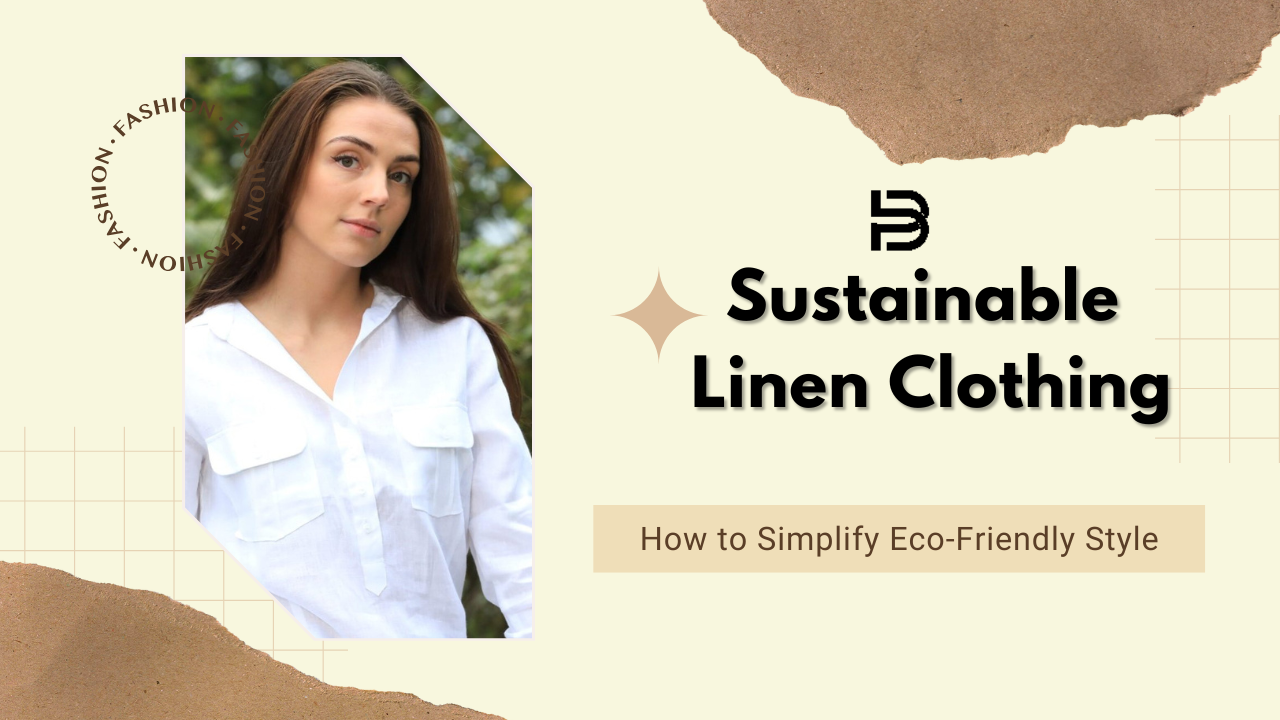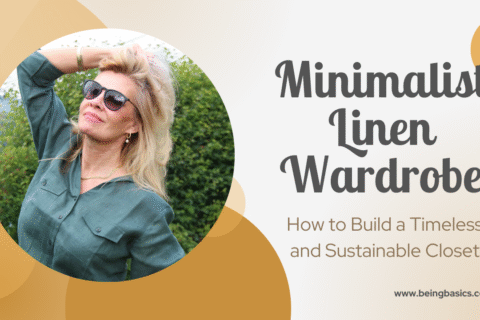
How to Simplify Eco-Friendly Style with Sustainable Linen Clothing?
Every year, the world produces 100 billion garments, most of which will last only a few seasons. We wear them, wash them, discard them, and repeat the cycle without realizing the true cost of our clothing. Fashion may be about self-expression, but behind the bright displays and seasonal trends lies an industry draining the planet’s resources and polluting its ecosystems. The answer to all these problems is sustainable linen clothing.
Now, imagine a different world where our clothes breathe, decompose naturally, and don’t leave a toxic footprint behind. That world isn’t a fantasy. It’s what sustainable linen clothing offers.
But before we discuss why organic linen apparel is the future, let’s examine the damage caused by conventional fabrics.
The Fabric Industry is a Silent Polluter
Fashion is often seen as glamorous, but the reality behind it is far from beautiful. The textile industry is one of the biggest contributors to global pollution, consuming an alarming amount of resources and leaving behind a trail of waste.
1. Water Consumption: Cotton is Thirsty
Cotton is often marketed as a “natural” fabric, but did you know that producing just one cotton shirt requires up to 2,700 liters of water? That’s enough drinking water for a single person for three years. Global cotton production accounts for 24% of the world’s insecticide and 11% of pesticide use. These chemicals contaminate soil, seep into water sources, and disrupt ecosystems.
2. Synthetic Fabrics: Plastic in Disguise
If you’re wearing polyester, acrylic, or nylon, you’re essentially wearing plastic. These fabrics are made from petroleum-based materials and take hundreds of years to decompose. Even worse, they shed microplastics into the water system every time we wash synthetic clothes. These particles end up in the oceans, harming marine life and eventually making their way into our food chain.
3. The Landfill Crisis: Fast Fashion = Fast Waste
The average person throws away 37kg of clothing annually, and 85% of those discarded clothes are in landfills. Many of these fabrics contain synthetic blends, which will take centuries to break down. Even decomposing pieces release harmful dyes and chemicals into the soil.
4. Toxic Chemicals in Textile Production
Ever noticed how new clothes sometimes have a strong chemical smell? That’s because most fabrics undergo harsh chemical treatments during production. From bleach to formaldehyde, these substances can cause skin irritation, allergies, and even respiratory issues. And once these clothes are washed, these chemicals flow into rivers and lakes, affecting wildlife and communities.
Enter Linen Clothing: The Breathable, Sustainable Alternative
Let’s talk about linen—the fabric that doesn’t drain the earth’s resources or leave behind a toxic legacy. Linen comes from flax, one of the most eco-friendly plants on the planet. Unlike thirsty cotton or synthetic fabrics, flax grows with minimal water, no pesticides, and zero waste.
1. Grows with Minimal Resources
Flax plants are incredibly resilient. Unlike cotton, they don’t require artificial irrigation and can thrive with rainwater. That means linen has a much smaller water footprint compared to other fabrics.
2. No Pesticides, No Chemical Overload
Flax is naturally resistant to pests, so farmers don’t have to douse it in pesticides or synthetic fertilizers. This keeps both the soil and surrounding ecosystems clean and chemical-free.
3. 100% Biodegradable and Zero-Waste
When a linen garment reaches the end of its life, it doesn’t sit in landfills for centuries like polyester. It naturally decomposes within a few months and returns to the earth without releasing harmful chemicals. Plus, every part of the flax plant is used—meaning zero waste in production.
4. Naturally Breathable & Strong
Linen isn’t just good for the planet but also for you. It has an open weave structure that circulates air, keeping you cool and fresh even in Norwegian summers. Plus, unlike fragile fast fashion pieces, linen strengthens with time—meaning your favorite linen outfits will last for years.
Sustainable Linen Clothing: A Style Revolution
At Being Basics, we believe fashion should be effortless—not just for you but for the planet. Our collection is designed around minimalist linen wardrobe principles, offering versatile, breathable pieces that fit seamlessly into your lifestyle.
Here’s what makes our Nordic linen fashion collection the perfect blend of style, comfort, and sustainability:
1. Lightweight Linen Trousers
Perfect for warm summer days when you want to look put-together without feeling like you’re wrapped in a sauna, our linen trousers are designed to be breathable, comfortable, and effortlessly stylish.
2. Minimalist Linen Wardrobe Staples
We create versatile, mix-and-match pieces that help you build a wardrobe with fewer, better clothes. Think linen shirts, relaxed-fit trousers, and breezy dresses—timeless pieces you can wear season after season.
3. Affordable Linen Clothing Without Compromising Quality
Sustainable fashion shouldn’t be exclusive. We believe in making organic linen apparel accessible without cutting corners on quality or ethics. Our linen pieces are ethically made, long-lasting, and fairly priced.
Conclusion
Switching to sustainable linen clothing norway isn’t just a fashion choice—it’s a commitment to a healthier planet. Linen requires minimal water, grows without harmful chemicals, and supports ethical, slow fashion. Its breathable, long-lasting comfort makes it the perfect alternative to wasteful fast fashion, and when it reaches the end of its life, it biodegrades naturally, leaving no trace behind. The real question isn’t “Should I switch to linen?”—“Why haven’t I already?”
Step into the future of fashion with Being Basics—sustainable, stylish, made for you, and made for the planet.




